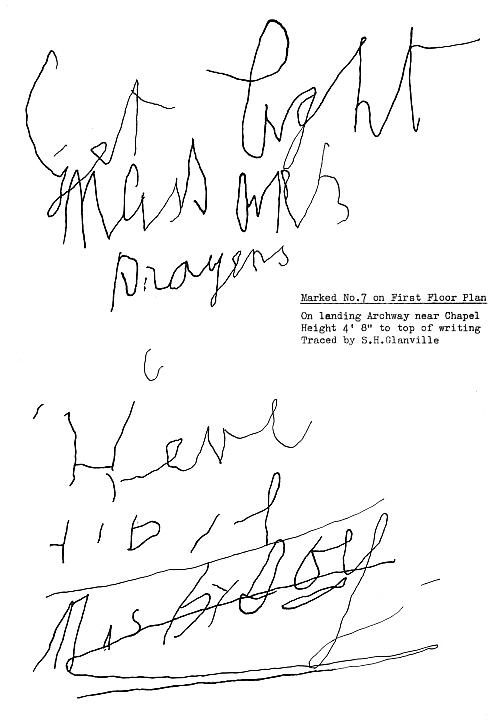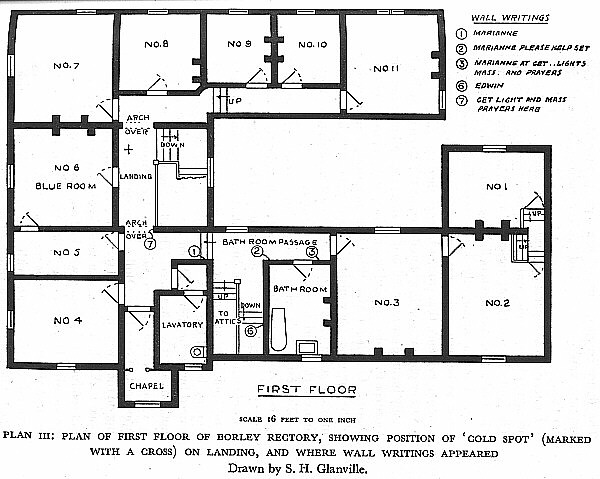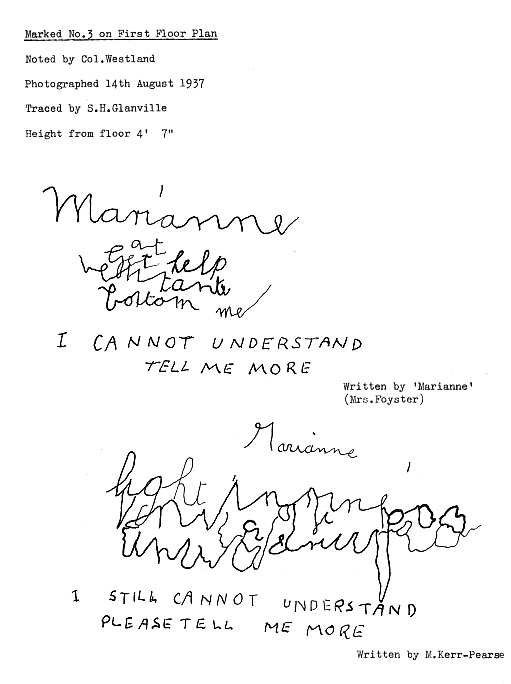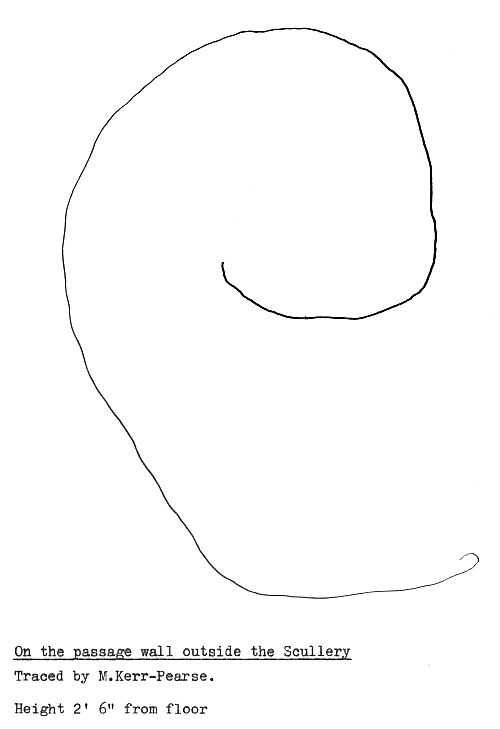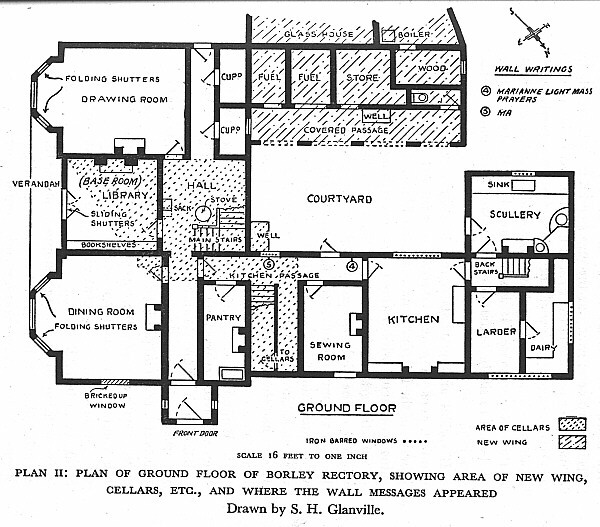|
For some reason, three of the wall writings had stood out when I first read about the Rectory. (Note that two of them were perhaps the ones most often talked about in the books.) One evening I took some time to ponder if the position of these three wall writings possibly meant anything. After carefully considering the locations of the writings and the activity that was known to happen in those areas, it turns out that I had once again understestimated the ghost nun. All three wall writings not only played on something that had taken place in the area where the writing was put but they all concerned an object in water, the ghost nun's way of telling about her fall down a well. Two of the writings made use of domestic things in the Rectory where water was regularly used. These two places were the scullery and the wall outside the bathtub room. The third writing "recycled" a section of the Rectory that the nun had been using to symbolize her fall into the well. This was the cold spot at the top landing of the main stairwell. This was a logical location for symbolizing the well because it was directly over the spot in the celler where Harry Price had noted that the ground was sinking. It later made sense to me that this sinking ground might be the remains of the actual abandoned well that the nun had fallen into. The first of the drawings that I want to show actually clued me in on one of the more elaborate charades that the ghost nun had pulled off. This was written in the arched opening that separated the main stairwell landing from the chapel. The floor plans are a bit busy so take your time in finding things. With respect to the first charade that we are examining you are looking for a small circled 7. However, note that there are two circled 7's, one of them being in the legend at the top right part of the plan. The location you want to examine is the to the left of the center of the picture. In this charade "act 1" shows Marianne Foyster near the chapel with Edwin Whitehouse. If you consider the personal profiles of Marianne and Edwin act 1 can be construed to reflect on the social relationship of the nun to her murderer and implies that they may have initially been romantically involved. |
